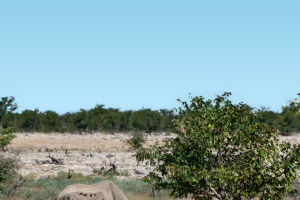Illegal wildlife trade is one of the most insidious threats to biodiversity, endangering countless species across the globe.
While wildlife trafficking is often associated with exotic pets, animal products, and traditional medicines, its effects are far-reaching and devastating.
The illegal wildlife trade not only causes species to go extinct but also disrupts ecosystems, depletes resources, and undermines conservation efforts. Understanding how this illicit trade impacts biodiversity is crucial to curbing its disastrous consequences. In this article, we explore the negative effects of illegal wildlife trade and discuss actions we can take to protect endangered species.
The Scope of the Illegal Wildlife Trade
The illegal wildlife trade is a multibillion-dollar global industry involving the trafficking of live animals, animal parts, and plants. Some of the most trafficked species include elephants, rhinoceroses, tigers, pangolins, and various reptiles and birds.
These animals are removed from their natural habitats and traded illegally for various purposes, including ornamental uses and as exotic pets.
According to the United Nations, wildlife trafficking is the fourth-largest illegal trade in the world, surpassed only by the trade in drugs, arms, and human trafficking. An estimated $20 billion in illegal wildlife trade occurs annually, leading to both direct and indirect consequences on biodiversity.
What makes the illegal wildlife trade particularly devastating is the loss of not just individual animals but entire populations. Species that are already endangered or vulnerable are often the primary targets.
In many cases, these animals are taken from their habitats without any consideration for the long-term ecological effects, leaving ecosystems destabilized and food chains disrupted.
Impact on Species and Ecosystems
1. Species Extinction:
The most obvious impact of the illegal wildlife trade is the risk of species extinction. The poaching of elephants for their ivory, rhinos for their horns, and tigers for their pelts is decimating populations at an alarming rate.
The International Union for Conservation of Nature (IUCN) lists over 50 species of mammals, birds, and reptiles that are threatened by illegal trade. Some species are pushed so close to extinction that it may be too late to recover them in the wild. The case of the Javan rhinoceros, with fewer than 60 individuals left in the wild, highlights the urgency of addressing this issue.
2. Disruption of Ecosystems:
Every species plays a specific role in its ecosystem. When a species is removed, the balance of the entire ecosystem is affected. For instance, elephants help to maintain the structure of savannas and forests by uprooting trees and clearing brush, which creates space for other species to thrive.
Removing these keystone species from their habitats can lead to significant changes in vegetation and the structure of ecosystems, ultimately affecting biodiversity at all levels.
3. Loss of Genetic Diversity:
When animals are illegally trafficked, they are often removed from their natural habitats before they have a chance to reproduce. This loss of breeding opportunities reduces genetic diversity, which is essential for the health and survival of populations. Genetic diversity makes species more resilient to diseases, environmental changes, and other stressors.
Without it, populations become increasingly vulnerable to extinction.
4. Increased Vulnerability to Disease:
The illegal wildlife trade also exacerbates the spread of diseases, especially when animals are trafficked across borders. The transportation of animals in unsanitary and overcrowded conditions can increase the likelihood of disease transmission.
Why Is the Illegal Wildlife Trade So Prevalent?
Several factors contribute to the ongoing prevalence of the illegal wildlife trade:
1. Demand for Exotic Pets and Animal Products:
Exotic pets, such as parrots, reptiles, and monkeys, are in high demand in both local and international markets. The appeal of owning a rare or unique animal often outweighs considerations about the species' welfare or the legal implications. Similarly, animal products are sought after for luxury goods or ornamental purposes.
This demand fuels the market for illegal wildlife trafficking, making it a highly lucrative industry.
2. Weak Enforcement of Laws:
Many countries have inadequate law enforcement and insufficient resources to combat illegal wildlife trade. While there are international agreements and national laws aimed at curbing trafficking (such as CITES - the Convention on International Trade in Endangered Species), enforcement remains a challenge.
Corruption, lack of administrative will, and insufficient penalties often allow wildlife traffickers to operate with relative impunity.
3. Poverty and Lack of Awareness:
In some regions, poaching and trafficking are driven by poverty. Local communities, facing economic hardship, may resort to hunting or selling endangered species as a means of survival. Additionally, there may be a lack of awareness about the environmental, economic, and health risks associated with the illegal wildlife trade.
What Can We Do to Stop It?
1. Strengthen Legislation and Enforcement:
Governments must implement stricter laws and policies to combat wildlife trafficking. This includes better funding for law enforcement agencies, harsher penalties for offenders, and international cooperation to stop wildlife trafficking networks.
CITES remains a crucial instrument, but it must be supported by stronger domestic laws and enforcement measures.
2. Raise Public Awareness:
One of the most effective ways to reduce demand for illegal wildlife products is through public awareness campaigns. By educating people about the harm caused by wildlife trafficking and promoting alternatives to products like ivory or exotic pets, we can reduce consumer demand.
Media campaigns, documentaries, and community outreach programs can help spread awareness.
3. Support Conservation Organizations:
Many organizations are working tirelessly to combat wildlife trafficking and protect endangered species. Donating to or volunteering with these groups can help fund vital conservation efforts, such as anti-poaching patrols and rehabilitation programs for trafficked animals.
4. Promote Sustainable Alternatives:
Supporting businesses that use sustainable and ethical practices can help reduce the demand for illegal wildlife products. For example, eco-tourism provides an alternative to poaching by encouraging the preservation of wildlife in their natural habitats for educational and recreational purposes.
Conclusion
Illegal wildlife trade is a complex issue that threatens biodiversity and disrupts ecosystems worldwide, with far-reaching consequences. While the challenge is immense, there is hope.
By strengthening laws, increasing public awareness, supporting conservation efforts, and promoting sustainable alternatives, we can collectively help reduce the impact of the illegal wildlife trade. Every action counts in preserving our planet's precious biodiversity for future generations.


